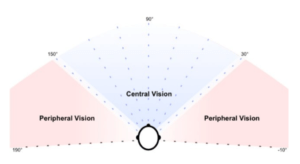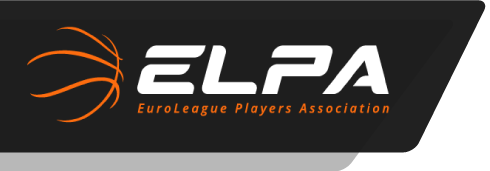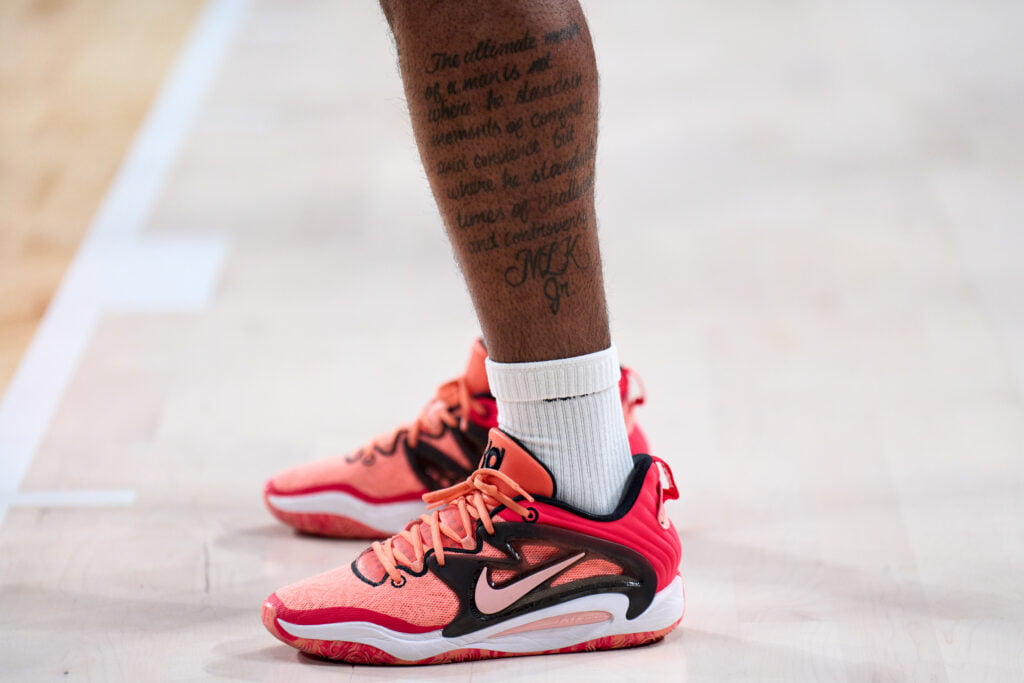Visual system is one of the most important sensory systems in performing sports skills. Scientific evidence shows improvement as a result of practice (Quevedo et al., 1999; Quevedo and Solé, 1995; Paul et al., 2011; Balasaheb et al., 2008; Shwab and Memmert, 2012; Rezaee et al., 2012; Krzepota et al., 2015). However, no definite agreement exists among the experts and researchers, given that most of the interventions are on the court (as we will present at the end of this article), and coaches don’t have time or the tools to conduct a proper study.In particular,
visual training is defined as a collection of techniques employed for the purpose of developing visual functions of athletes, a process by which their sport performance is enhanced. (Abernethy B, Wood JM., 2015). Each sport has their own visual needs. This is the main reason why it is common to find eye experts working in one discipline, and so often with one athlete at the time. The essential visual skills for optimal basketball performance are:
- DYNAMIC VISUAL ACUITY

Allows a player to maintain vision clarity while in motion, or while the ball or other players are in motion. Since basketball is a sport that involves constant motion, dynamic visual acuity is a key to perform at high level.
Allows player’s eyes to remain focused on an object, as it moves between two distances (near and far). As a basketball player, this skill is important because the ball is constantly moving from player to player, or from the player to the basket.We recommend to pay attention to this visual ability, due to the large periods of time that players watch small devices, such as mobile phones, tablets and laptops. Our ocular system is designed to look far away, but nowadays we are too often forcing our eyes to focus on short distances.
When an object is getting closer to you, your eyes have to converge to see it. In other words, convergence is the ability for the eyes to turn inward towards each other. This is important for all activities done at short working distance.
Focus change exercise:Hold one finger about 10 centimeters away from one eye. Focus the gaze on the finger. Move the finger slowly away from the face. Focus on an object farther away, and then back on the finger. Bring the finger back closer to the eye. Focus on an object farther away. Repeat three times.
Pencil pushups exercise:This exercise can help people with convergence insufficiency. Hold a pencil at arm’s length, situated between the eyes. Look at the pencil and try to keep a single image of it while slowly moving it toward the nose. Then, move the pencil toward the nose until the pencil is no longer a single image. Position the pencil at the closest point where it is still a single image. Repeat 20 times.
Tip 1: Introduce simple daily exercises (above) to challenge your visual system and prevent vision problems.
All that is visible to the eye outside the central area of focus. This visual skill is necessary for basketball players because it helps you to be aware of your surroundings, the other players moving around and anything else that might be happening on the court. With the right practice basketball player can improve his/her angle of vision.

Illustration of central vision and peripheral vision
The interval time between an external single signal and your reaction to it.
The time it takes to respond to the correct stimulus out of many stimuli and responding to it in the best way possible. (Boisgontier et al., 2014) Since brain receives more information from the environment, it also takes a slightly longer time to respond. This is also known as Hick’s law. (Vences de Brito et al., 2011). The factors that influence reaction time are numerous, being able to differentiate between those dependent on the own person and those related to the stimulus (Baayen and Milin, 2010).
Tip 2: Introduce basketball drills that specifically work on visual skills, such as reaction time and peripheral vision.
The ability to distinguish between an object and its background, like a ball against the stands.
The ability to see using both eyes together. It relates to depth perception and eye-hand coordination. Imma Solà Garcia, Head of the Visual Training Program at Sant Cugat CAR High Performance Center, says that “this ability is key to (sports) performance, especially for the precision and reaction time”.
- DEPTH PERCEPTION

The ability to quickly and accurately judge the distance and speed of objects. Humans have two eyes with overlapping visual fields that use parallax to gain depth perception. This process is known as stereopsis: term that is most often used to refer to the perception of depth and 3-dimensional structure obtained on the basis of visual information deriving from two eyes by individuals with normally developed binocular vision (Brener and Smeets, 2018).
Tip 3: Get a visual exam. Poor vision could be the reason for low performance in some specific areas.
The ability to do activities that require the simultaneous use of hands and eyes. It is a key skill in sports like basketball.
Tip 4: Introduce basketball drills that specifically work on eye-hand coordination and skill.
The eye that provides a slightly greater degree of input to the visual part of the brain and more accurately relays information about the location of objects is considered the dominant one. Approximately 69% of the population are right-eye dominant and 29% left-eye dominant.The concept of
cross-dominance, in which the dominant eye is on one side of the body and the dominant hand is on the other, appears to have an advantage in elite sports. Some studies show that cross-dominance (or eye-hand laterality) has impact on the performance. Specifically, one study supports that an alternative basketball shot mechanic based on the eye-hand laterality of the homogeneous players may help them to obtain average percentages significantly higher. (C.J. López-Díaz et al., 2015). The implication of this finding is big, since it could mean that shooting technique should be tailored to the player’s laterality needs. In other words, there is no universal shooting technique: one player, one technique.
Tip 5: Coaches should evaluate players’ eye-hand laterality and observe their shooting and dribbling technique. Assessment and modification is required in order to gain effectivity. Real-life case:
A young player (center) signed for a professional team in Spain in 2015. He was showing good progression. He started working on his weaknesses with the player-development coach on problems such as catching and/or grabbing the ball in different situations (P&R catch, rebound, off the floor, etc.). The common issue was that he consistently experienced problems with catching the ball above his head.Player-development coach created a program with eye-hand coordination drills in order to improve this aspect of the game. The player improved, but slowly. Curiosity and search of excellence pushed them to explore other options. This young player ended up passing a vision exam at the ophthalmologist and he was diagnosed with diplopy.His development program was modified and he was working on it daily, 10 minutes before each practice. As a result of this approach, he drastically reduced his mistakes when catching and/or grabbing the ball, improved his general performance, and elevated his career. This real-life case shows that many of the abilities required for successful performance in sports are amenable to specific training programs for that particular sport.

Extracted from ACB.com
CONCLUSIONAs always, our general recommendation remains that every high-level athlete should take care of his/her body to the best of their abilities. Just like the development other skills, visual training has its own place in sports. It should be incorporated to improve the visual-perceptual and visual-kinetic ability in order to maximize athlete’s potential and performance.
Authors: Mar Rovira, Igor Jukic, Francesco Cuzzolin, Julio Calleja-Gonzalez, , Baris Kocaoglu, Jaime Sampaio, Sergej M. OstojicReferences:
- Abernethy B, Wood JM. Journal of Sports Sciences. 2001;19(3):203-22.
- Bache, M.A.B.; Naranjo, J. (2014). “Lateralidad y rendimiento deportivo”. Med. Dep. 31(161): 200–204
- Baayen, R. H., and Milin, P. (2010). Analyzing reaction times. J. Psychol. Res. 3, 12–28. doi: 10.21500/20112084.807
- Boisgontier, M. P., Wittenberg, G. F., Fujiyama, H., Levin, O., and Swinnen, S. P. (2014). Complexity of central processing in simple and choice multilimb reaction-time tasks. PLoS One 9:e90457. doi: 10.1371/journal.pone.0090457
- Brener, E., J.,Smeets. (2018). Depth Perception. In book Steven’s Handbook of Experimental Psychology and Cognitive Neuroscience. Volume 2. John Wiley & Sons, Inc
- Dorochenko, P. (2013). El Ojo director.
- Eser I, Durrie DS, Schwendeman F, Stahl JE (September 2008). “Association between ocular dominance and refraction”. Journal of Refractive Surgery. 24(7): 685–9.
- Hopwood MJ, Mann DL, Farrow D, Nielsen T. International Journal of Sports Science and Coaching.2011;6(4):523-36.
- Krzepota J, Zwierko T, Puchalska-Niedbal L, Markiewicz M, Florkiewicz B, Lubinski W. “The efficiency of a Visual Skills Training Program on Visual Search Performance”. Journal of Human Kinetics volume 46/2015, 231-240
- J. Lopez-Diaz, N. Niño García, M. Sillero Quintana y A. Lorenzo Calvo. “¿Puede el principio de lateralidades múltiples mejorar el porcentaje de acierto en el tiro a canasta?”. Cuadernos de Psicología del Deporte, vol. 15, 3, 211-218
- Mazyn LI, Lenoir M, Montagne G, Savelsbergh GJ (August 2004). “The contribution of stereo vision to one-handed catching (PDF). Experimental Brain Research. 157(3): 383–90.
- Reigal E, Barrero S, Martín I, Morales-Sánchez V, Juárez-Ruiz de Mier R, Hernández-Mendo A. Relationships Between Reaction Time, Selective Attention, Physical Activity, and Physical Fitness in Children. 2019; Frontiers in Psychology, 10, 2278
- Vences de Brito, A., Salva, C., Cid, L., Ferreira, R., and Marques, A. (2011). Attention and reaction time in shotokan karate practitioners. Asian Martial Arts 1, 141–156.
- Vera J, Jiménez R, Cárdenas D, Redondo B, García JA. Visual function, performance, and processing of basketball players vs. sedentary individuals. J Sport Health Sci 2020; 9:587-94.
- Wu, Y., Zeng, Y., Zhang, L., Wang, S., Wang, D., Tan, X., Zhu, X., Zhang, J., y Zhang, J. (2013). The role of visual perception in action anticipation in basketball athletes. Neuroscience, 237, 29-








